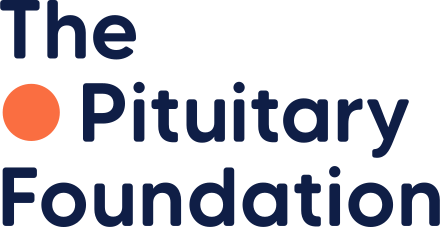This article by Dr Alex Stilwell appeared in Pituitary Life, our members magazine in Spring 2022. To get access to more articles like this then you can sign up to become a member for just £25 a year!
As an anaesthetist I am often told by patients when we meet for the first time “So YOU’RE the one who’s going to knock me out then”. Which is essentially true – in most cases. But of course, there is a lot more going on behind the scenes. In this article I discuss anaesthesia for pituitary surgery as well as pituitary patients preparing for surgery of any type. But first in order to debunk some of the myths of anaesthesia I answer the following questions:
What actually happens to me under an anaesthetic?
The word anaesthesia comes from the Greek anaisthēsia meaning a lack of sensation. This can take a spectrum of forms. A local anaesthetic injection blocks sensation over a particular area, for instance a finger. A regional anaesthetic, also known as nerve block, will produce this effect over a much larger area, for example the whole arm. Another form of this is spinal or epidural anaesthesia used to numb the lower body or trunk. General anaesthetic (GA) however leads to a complete but reversible state of unconsciousness under the control of an anaesthetist. This is achieved by an infusion of powerful sedative medication into a drip and or continuously breathing anaesthetic vapour. Which is not such a big step away from the chloroform-soaked handkerchief used by John Snow in 1853 to administer anaesthetic to Queen Victoria during childbirth!
Once asleep, people either breathe for themselves through a breathing tube or other airway device or a machine breathes for them, known as mechanical ventilation. There are physiological changes to other organs in the body that occur during anaesthesia and ventilation namely the heart, lungs and blood vessels. The pituitary and endocrine system is also stressed by surgery, more on this later.
Will I definitely wake up at the end?
Advances in medications, standards of care, equipment and monitoring have led to huge improvements in the safety of anaesthetic provision. Statistically, the chance of dying as a direct result of anaesthesia is 1 in 100 000. Comparing this to a lifetime risk of death from road travel in the UK of 1 in 240 it seems safe. However, the risks of any intervention should always be weighed up against the consequences of not going ahead in the first place.
Can I wake up in the middle?
An area that has been studied intensely. The largest study to date specifically looking at awareness under anaesthesia was published in the UK in 20141. The project concluded around 1 in 10,000 people had recall of anything that happened during their procedure under anaesthetic. Of this number, a far smaller minority were able to remember clear events, including hearing conversations or experiencing pain. Great care is taken during the anaesthetic to minimize the chance of awareness. An exception is made though, when sedation is used rather than GA. In this case the aim is a lighter plane of sleep or even simply calmness in order to better tolerate a more minor procedure.
What are the risks?
Serious complications are rare, for example a life-threatening reaction to medication, inability to deliver oxygen, or permanent nerve damage from a nerve injection. The side effects of general anaesthesia such as a sore throat, nausea, drowsiness or delirium wear off usually within an hour. Uncommonly, teeth can be damaged during insertion of the breathing tube – which is placed soon after going off to sleep. It is important to sort out any teeth that are in a poor condition and mention to the anaesthetist the presence of loose teeth, dentures, crowns or implants before surgery.
What will happen on the day?
Checks, checks and more checks. Either in hospital already receiving treatment or arriving on the day of surgery checks are carried out for safety. You will be expected to have fasted for a minimum of six hours. Clear fluids like water or squash are permitted up to two hours before surgery. This is very important to minimize the risk of regurgitating stomach contents into the lungs when your body relaxes under the effect of anaesthetic. You will wear a trendy hospital gown and identity wristband displaying allergy status. You will be escorted to the operating theatre or anaesthetic room and the surgical consent form will be confirmed again. The team inside the theatre is larger than people usually expect and all the staff are dressed in scrubs. Heart and breathing monitors are put on and a cannula (drip) inserted. An oxygen mask is placed over the nose and mouth just before the anaesthetic starts and you are off to sleep. Children, in most circumstances, are allowed a parent to stay with them right up to this point if they wish. In more complex cases some extra steps are also taken before the anaesthetic is given.
When the anaesthetic is turned off, waking up happens moments later in the recovery room, in the operating theatre after surgery finishes or somewhere in between the two. Occasionally, patients are woken up more slowly in an intensive care setting when additional post-operative care is needed. Close monitoring continues until you are comfortable and stable. Pain killers are offered to take the edge off any pain from the surgery. What happens next depends largely on the type of surgery.
GA for pituitary surgery
Surgery on the pituitary gland is normally undertaken in specialised centres with high throughput and experience. When surgery is required it usually follows a joint decision between the patient, endocrine and neurosurgery teams with time to prepare, optimise hormone levels and other conditions. For life threatening pituitary conditions surgery is carried out urgently.
The majority of pituitary surgery is transsphenoidal – which means carried out through the nose. A local anaesthetic is usually administered in the nose for pain relief and to constrict the blood vessels to limit bleeding. As a result of surgery your nose will be padded with a thick dressing when you wake up and still maybe quite sore. Another surgical approach through the skull (craniotomy) is mainly reserved for more complex conditions. Under GA patients also routinely receive pain killers, antibiotics to prevent infection, anti-sickness medicines, fluids and sometimes drugs that work on the cardiovascular system. A range of monitoring is in place for safety. A urine catheter is put into the bladder to drain urine whilst you are asleep. Once the surgery is finished you will be monitored initially in the recovery room and assessed for any early complications. Over the first 24-48 hours particular adjustments are made to medications such as steroid replacement to compensate for the stress that surgery puts on the body.
Pituitary patients undergoing other procedures under anaesthetic
Having a pituitary condition does not stop people also getting appendicitis, breaking bones or needing surgery for any other reason. Furthermore, some people with pituitary conditions have associated problems necessitating surgery like carpal tunnel syndrome. Part of the planning for surgery includes a pre-operative assessment led by a nurse or a doctor in which a number of questions are asked about health and fitness. In Covid times some of these appointments are by telephone or video link. Any reaction, difficulty or bad experience with a previous anaesthetic must be brought up at this time. Pre-operative investigations might include further blood tests and if needed, a more detailed assessment of the heart, lungs or even exercise testing at another appointment. You should have an up-to-date list of any medications taken so these can be continued whilst you are in hospital. Only certain medicines such as blood thinners should be stopped if needed before surgery; follow the advice of the surgical or pre-assessment team.
It is a good idea to remind anyone involved in your care that it is especially important not to miss pituitary replacement hormones like thyroxine, hydrocortisone, desmopressin (DDAVP). When fasting, or “nil by mouth” you can still take tablets with a sip of water and if this is not possible a dose should be given via an alternative route e.g., intravenously (IV). The same advice follows when bowel preparation is used because oral medications are less well absorbed. For patients taking steroid replacement, having surgery stresses the body just like being unwell and stress day rules should be observed. The association of anaesthetists (AAGBI) has recently updated guidance on dosing hydrocortisone for different categories of surgery2.
People with Cushing’s often find blood tests and cannulas difficult due to the effect of steroid hypersecretion. If this is the case, mention this early. Some people with acromegaly are terrific snorers or suffer with obstructive sleep apnoea (OSA). Prolonged monitoring after GA may be needed and, if you have a CPAP mask at home please bring it in! Acromegaly can also lead to distorted airway anatomy. A special way of putting in the breathing tube might be required before going to sleep. Any related problems such as heart disease or diabetes should be discussed so a plan can be made.
For anyone about to have surgery, good luck, and don’t forget to tell the doctors about your pituitary condition!
Sources
1. www.nationalauditprojects.org.uk/NAP5report
2. http://dx.doi.org/10.1111/anae.14963
Further information: www.rcoa.ac.uk/patientinfo







